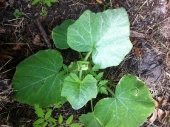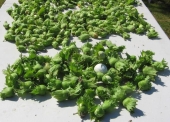


John F Dean wrote: If it were my build, I would be concerned about those pallets in contact with the ground rotting out in a few years.

Dan Boone wrote:The sawbuck is, essentially, a workbench for roundwood.
…..and pulling selected logs and poles out of the woods to make fence poles and structural members for various small outbuildings.
James Colbert wrote:I have heard from a couple people that kudzu does not grow in thick dense forests. You find kudzu at the edge of a forest or in open pasture. to me this says that well developed and healthy ecosystems don't have problems with invasive species.
ceog Hatfield wrote:Also, from further reading, of the two, the Black Locust (fast growing, nitrogen fixer, rot resistant, high energy fuel) is criticised as very invasive, whereas Catalpa (pretty, but not much use) is mostly harmless.

R Scott wrote:And barefoot! http://www.youtube.com/watch?v=7fWo0P0MdJM&feature=channel&list=UL



